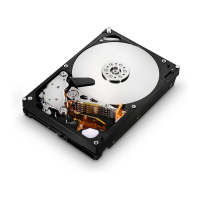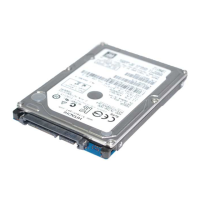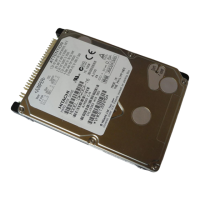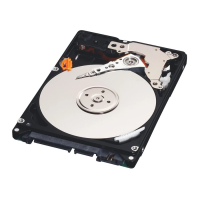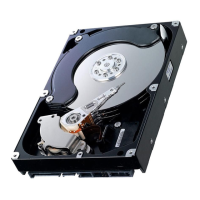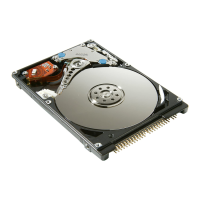Table 1-2 Controller chassis components
Item Item
Description
Name Min Max
1 Control
Panel
1 1 See Power controls and indicators on page 5-2
2 Main Blade
(cache
memory,
cache flash
memory,
backup
battery)
2 4 The main blades contain the cache memory, cache
backup (destage) battery, and cache flash memory
(SSD). Cache memory is available in 64GB, 128GB and
192GB capacities.
If the power fails, the cache is protected from data loss
by backup batteries and the cache flash memory, an
80 GB SSD drive. The batteries keep the cache alive
for up to 10 minutes while the data is transferred to
the flash memory.
Each main blade contains two replaceable multispeed
cooling fans.
3 MP Blade
(microproc
essor)
2 2 The MP blades are independent of the back-end I/O
modules and host I/O modules and can be shared
across them.
Each MP blade contains two replaceable multispeed
cooling fans.
4 host I/O
module
2 8 with
drives
----------
12 for
diskless
system
A host I/O module is an interface board that provides
connection to host servers. Each host I/O module
contains an internal processor and 128 bytes of edit
buffer memory.
5 Blanking panel which protects the slots for host I/O modules and/or back-end I/O modules
6 back-end
I/O module
0 if
diskless
----------
2 with
drives
4 A back-end I/O module provides connection to the
HDD, SSD, and FMD data drives. It controls functions
for data transfer between data drives and cache. The
back-end I/O module contains DRR (Data Recover and
Reconstruct), a parity generator circuit. It supports
eight FIBRE path and offers 32 KB of buffer for each
FIBRE path.
7 Power
supply
1 2 200-240 VAC input. Provides power to the controller
chassis in a redundant configuration. Each power
supply contains two cooling fans to ensure adequate
cooling in case one of the fans fails. The system can
operate with one power supply if the second one fails.
8 Service
Processor
1 1 A custom PC that is used to monitor and control the
storage system. It contains the Storage Navigator
software that is used to configure nd monitor the
system. Connecting the SVP to a service center
enables the storage system to be remotely monitored
and maintained by the Hitachi Data Systems support
team, significantly increasing the level of support.
1-6
Introduction
Hitachi Unified Storage VM Block Module Hardware User Guide

